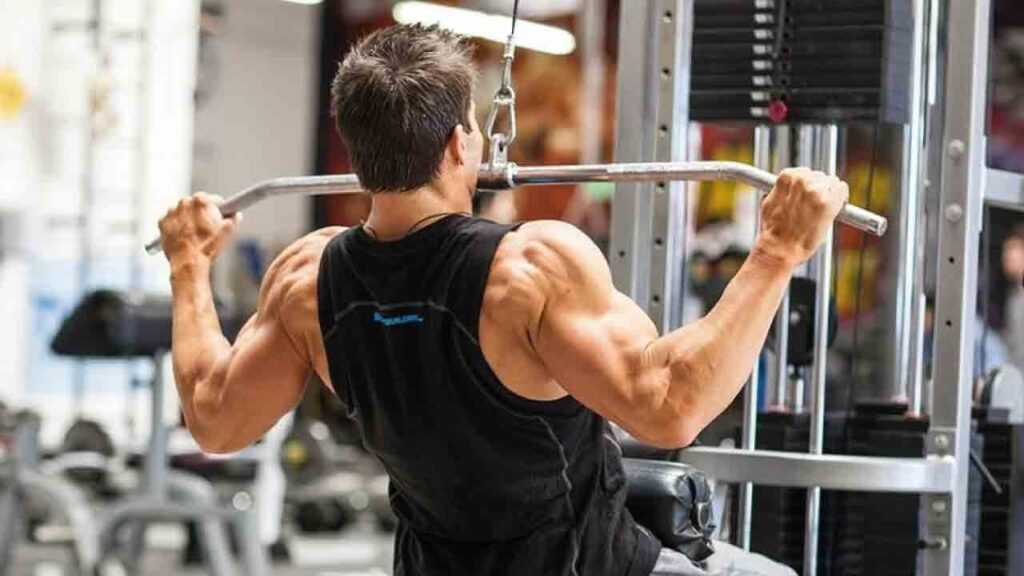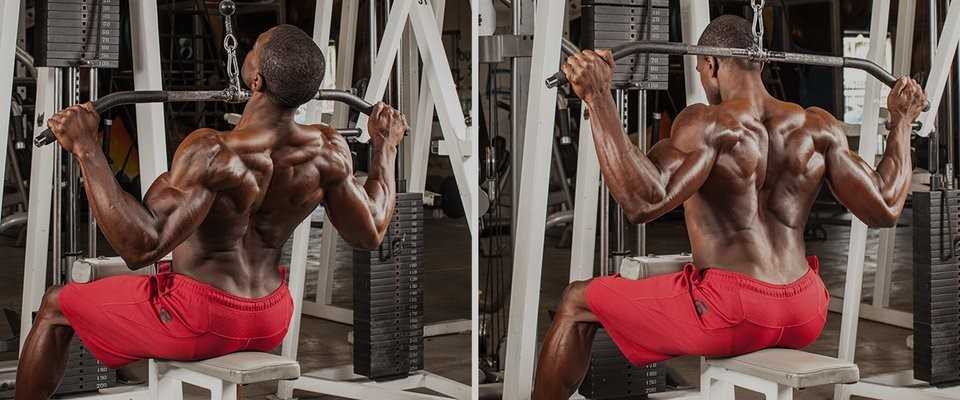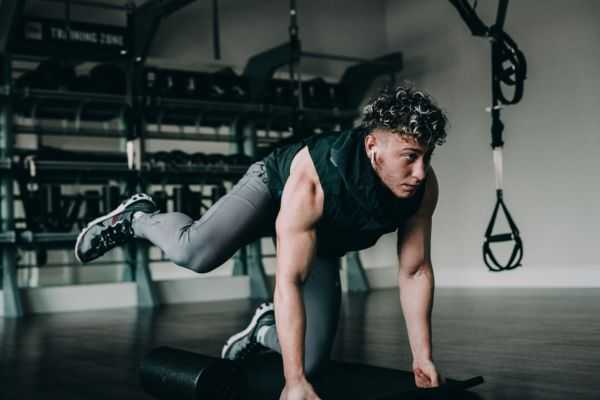When you walk into any gym, you could see a number of people queuing up behind the LAT PULLDOWN machine. What’s interesting are the different kind of attachments with different grips and varying widths, people are using for the pulldown movement, thinking that hitting it from different angles and styles, may activate the back muscles better, or it may also hit some muscles in the back which is getting missed with the other grips.

Let’s get the practical and science based understanding behind this concept.
So, we have generally the following bars being used:
- Wide pronated grip
- Close supinated grip/Reverse grip
- Close Neutral grip (palms facing each other, close grip)
- Wide Neutral grip (palms facing each other, wide grip)
On top of this, there are guys doing the behind the neck pulldowns as well as the front pulldowns.
A study, evaluated the effects of different hand positions on muscle activity during lat pull down. Ten men did 3 reps with their 10RM weight. Four different lat pulldown variations were tested i.e. close grip (close neutral grip), supinated grip (reverse grip), wide grip anterior (wide pronated grip front pulldowns), and wide grip posterior (wide pronated grip behind the neck pulldowns).
The study found that:
- For the latissimus dorsi, wide anterior grip (wide pronated grip front pulldowns) was better than the rest.
- For the long head of the triceps, wide anterior grip (wide pronated grip front pulldowns) was better than the rest.
- For posterior deltoid, all grips are similar, and all are better than wide posterior grip (wide pronated grip behind the neck pulldowns).
- For the pectoralis major, all grips are similar, and all are better than wide posterior grip.
The data suggest that the performance of the lat pull-down with the bar pulled anteriorly (to the chest) provides some mechanical advantage, allowing greater loads to be moved during these exercises than when the bar is pulled posteriorly (to the back of the neck).
The results of this study indicated that the wide grip hand position with the bar pulled anteriorly to the chest recruits more motor units, and therefore requires more work from the latissimus dorsi than any of the other conditions tested. Therefore, this handgrip position should be used to provide a greatest amount stimulus and a greater development of the latissimus dorsi than other handgrip positions.
In a study, 24 male subjects, performed three different types of lat pull downs i.e. behind the neck, front-wide, and neutral V-bar lat pulldowns, at 80% of the 1RM. For each movement, the activation in pectoralis major, latissimus dorsi, posterior deltoid and biceps brachii, was checked.
The researchers said that, the behind-the-neck lat pull-down exercise has been criticized because of its potential risk to the shoulder joint. The external rotation combined with abduction places the shoulder joint in a risk position because it minimizes the stabilization capacity of the rotator cuff and places the glenohumeral ligaments under great stress. This situation is worsened by horizontal abduction, which is needed to avoid the contact between the exercise bar and the head of the practitioner.
On the other hand, when performed in front-neck, a lat pull-down is executed in the scapular plane where there is more contact within the articular surfaces, lower stress of the glenohumeral ligaments, and a better function of the rotator cuff muscles. This technique has been used to replace the behind the neck pulldowns, being safer, more functional, and allowing for a wider range of motion.

Another possible variation of this exercise is replacing the common straight bar used by a V-bar. This bar allows a pulling down with the elbows at the sides, preventing horizontal abduction of the shoulder.
Here are the observations of the research:
- During the concentric phase (lowering movement), pectoralis major activation was much higher in the front lat pulldown, than V-bar or behind the neck pulldown.
- During the eccentric phase, pectoralis major activation was more in front lat pulldown & V-bar, than in behind the neck pull down.
- For the latissimus dorsi activation, all movements and grips were similar.
- For the posterior deltoid, activation was much more in front lat pulldown than V-bar in the concentric phase, and behind the neck higher than V-bar in the eccentric phase.
- Biceps brachii showed higher activation in behind the neck pulldown than front or V-bar pulldowns. Also, V-bar activated more biceps during both concentric and eccentric phases, than front lat pulldowns.
The researchers concluded that, considering the main objectives of lat pull-down, front lat pull down is the better choice, whereas behind the neck is not a good lat pulldown technique and should be avoided. V-bar could be used as an alternative.
In a study, twelve healthy men performed lat pulldown with four different grips, using a load of 70% of 1RM. The four grips used were wide pronated grip, wide supinated grip (wide reverse grip), narrow pronated grip, and narrow supinated grip/reverse grip.
The study found that a pronated grip is optimal for training the lats in an anterior lat pull down. This grip is also considered the safest among the rest. However, athletes and others engaged in resistance training can generally expect similar muscle activation which in turn should result in similar hypertrophy gains with a grip width that is consistent with a medium grip pull-down.
A study, suggested that, it is a general belief that a wider grip during lat pull down, activates the latissimus dorsi more than a narrow one, but without any broad scientific support. The study compared 15 men performing lat pulldowns using 3 different pronated grips i.e. narrow, medium and wide grip, at a load of 6RM.
Then study concluded that, there was no major difference in activation for latissimus dorsi, biceps brachii, infraspinatus, or trapezius when performing 6RM in the anterior lat pull-down with narrow, medium, and wide anterior grip widths. However, the 6RM load lifted was lower using a wide compared with a small or medium grip. The biceps received the greatest activity not at the narrow grip, but at the medium grip. The biceps had significantly greater activity in the concentric phase, than in the eccentric phase.
So, as a conclusion there is no one grip which is more effective than the others. Muscle activation is pretty much the same in all the grips, with minor variations (except behind the neck pulldowns). To wave off boredom, one could try the hands on the different grips, every now and then.



